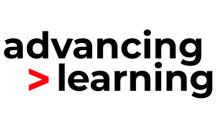I recently bought a new smart phone. My 4-year-old godson picked it up and within seconds he was doing things with it that I didn’t think was possible. The point is that children adapt quickly to digital technology and enjoy learning using any aspect of it. The digital resources that are available for the Max Science course support blended learning extremely well and they can be used in many different types. If we use Max Science Grade 5, we can see the opportunities on every page.
I am focusing on Evaporation and condensation. The digital resources are engaging and address the content effectively. The opening page displays the objectives and key words for the unit. There is an activity that introduces the key words by linking them to the questions asked. The headphone icon on the page plays a voice pronouncing the key words correctly. The research informs us that students must learn the correct pronunciation of key words and terms to allow them to reach their potential in education. If words are mispronounced it prevents progression to higher levels so this resource is valuable. Students can play this over and over and practice saying the words as often as they need to. There is a tool bar at the top of each page with further digital resources to be used. They can use the timer to measure how long an activity takes which adds a further challenge to their learning. They can highlight important information on the page or add their own notes. The drop-down menu displays a list of the words and phrases that are spoken and interactive activities. For example, unit 2 interactive activity 1 asks students to fill in missing words to complete a review of their learning about evaporation. They can reveal the correct answers at the end of each sentence or at the end of the activity. This allows students to work at their own pace and check their answers without intervention from the teacher. This technique builds confidence in students particularly those that want to work privately.
These activities can be used to review the learning at the end of each lesson or topic. There are many opportunities for students to engage in blended learning techniques as they research and find solutions for themselves. An extension activity poses a problem where the washing on a long washing line dries quicker than on a rotary drier. Students could complete this using remote or flex blended learning by working remotely for the majority of the task. The extension task asks students to explain why sugar dissolves in water. This could be used in flipped classroom blended learning where students research and consolidate their learning about the content remotely. They can then carry out the investigation in school. The method carried out could be used a teacher assessment of the learning of the content. Children enjoy digital learning and so we should embrace this. They should be allowed to use the resources when they want to allowing them to take control and ultimately be responsible for their own learning.
Words by Debbie Roberts.




